How to transplant marijuana plants
Usually, throughout the life of our marijuana plants, at some point we will have to transplant our plants to a container or larger pot, usually more than once. It is important to perform this task because the container will eventually be too small, and it will hinder the normal development of the roots and thus the growth and health of our cannabis plants.
With a correct transplant, we will allow the roots to continue to grow and so they will have a better substrate to be fed.
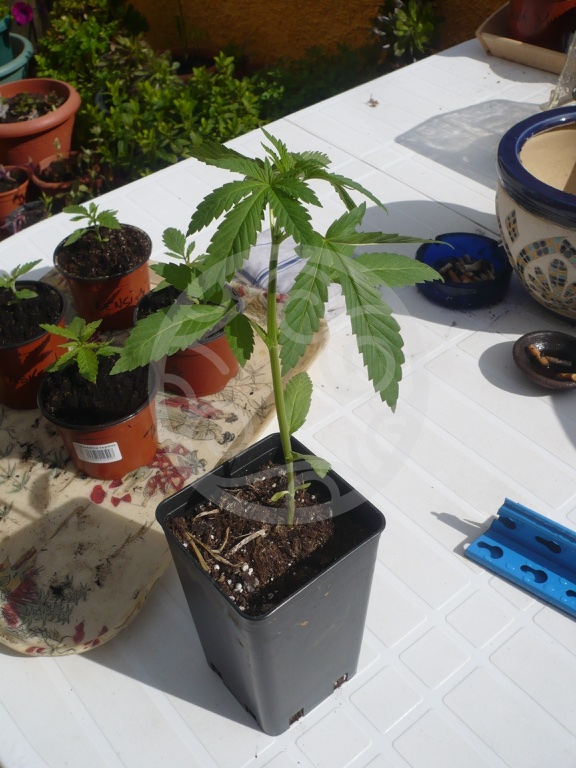
When to transplant cannabis plants?
First of all, we should note that autoflowering marijuana plants are an exception, and we recommend a single final transplant in their cultivation. For more information about this, we recommend that you read the post about growing autoflowering marijuana.
If you have germinated feminised marijuana seeds or regular seeds with a regular photoperiod in your crop, the first transplant will almost be immediately, unless the seeds have been germinated directly on the ground. As soon as the tip of the root sticks out, you should move them to their new container.
If you start with cuttings, the first transplant will be when the roots colonise the jiffy, rockwool, or any media used to root your clones.
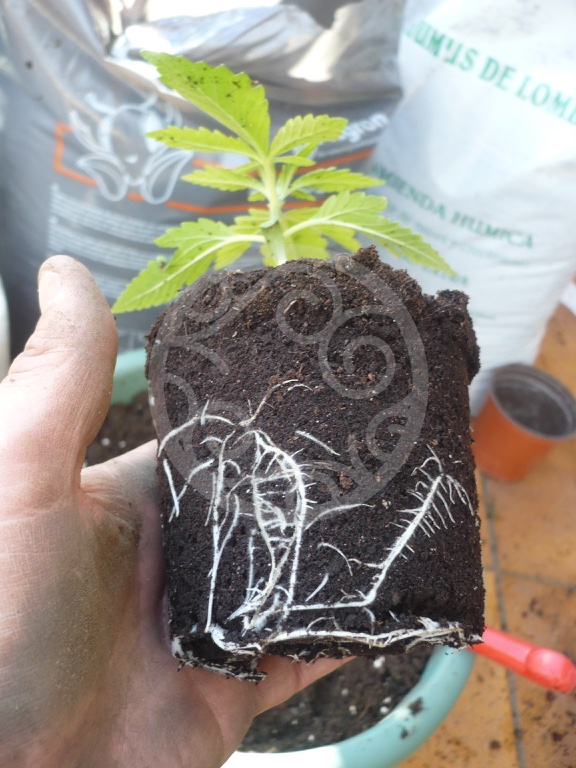
Usually, you should do the first transplant into a relatively small container, although this depends on your needs and your cultivation method but containers of between 0.5 and 3 litres are the most commonly used in the first phase of growth.
Using larger pots at that moment might be a bad idea because there is the risk of the soil staying wet for too long. In this early stage of growth, plants are sensitive to mould, so a smaller pot is preferable so as to keep the substrate somewhat dry. Moreover, the roots tend to grow towards the walls and the bottom of the pot, so the entire inner/central area of the container will remain empty.
Doing several transplants allows us to multiply the root area, therefore, to enhance absorption of water and nutrients necessary for producing large buds.
When the roots have colonised the whole of the container, you should do second transplant, usually just before flowering. If you are growing regular seeds, you may be interested in doing so once you have identified the females and males so that you save some soil and pots and do less work.
This time the transplant will be to the final container, and again, its size will be different depending on the growing method. When growing indoors, growers tend to use pots of 3 L and 25 L or more, and outdoor growing is usually done in pots up to 100 L.
It should be noted that a transplant causes the plant to stress. It is normal for the marijuana plants to not give signs of growth for a few days, but if you have been careful, you soon will notice the positive effects of the transplant and the plants will thank you.
Choosing the right substrate for your marijuana crop will also foster a good recovery and proper development of the plant.
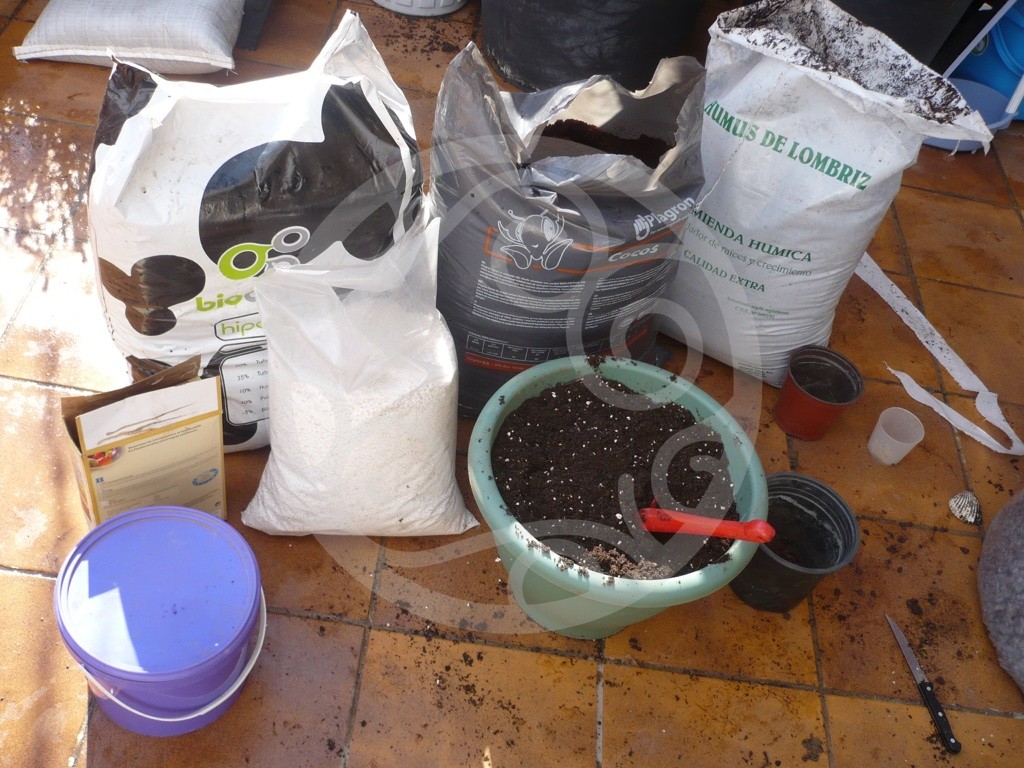
How to transplant marijuana on the ground?
Transplanting is not a difficult job, but it does require certain skills and care so that the damage to your plant roots is as little as possible. A good transplant is related to the degree of stress and recovery time needed for the plant to re-grow normally.
When transplanting cannabis plants, you should bear in mind that roots like high humidity, little air flow and low light. Once the transplant is done, try not to expose the plant to direct sunlight during the early hours.
We will show you in pictures how we think it is the correct way of transplanting plants so that they suffer the least stress:
- First, prepare the container where the plant will live by filling it with substrate and adding any fungus that benefits the root such as endomycorrhizae…
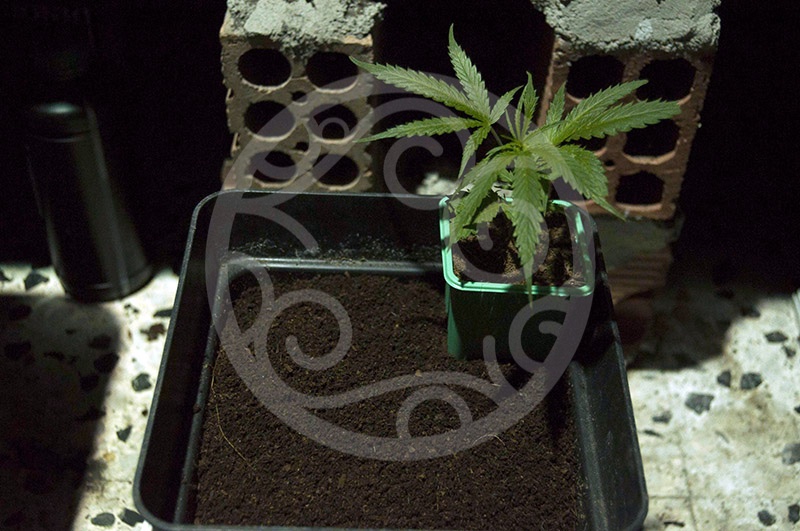
- Then, ideally, you should make a hole and press lightly with the pot plant where the plant currently is until this is buried in the substrate. In this way the change of container will have a minimum impact on the roots. Once this is done, press gently all edges on the pot.
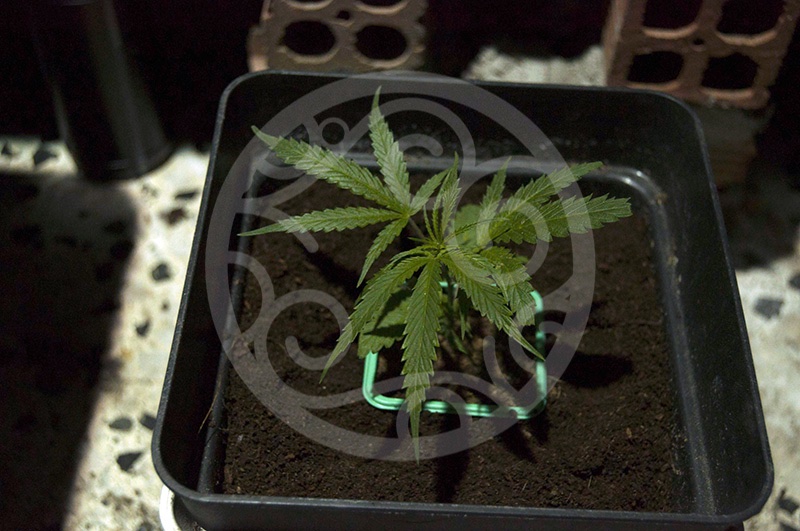
- You should take extra care at this moment because you will have to remove the plant from its container. To do so, grab the stem from the very bottom while keeping your fingers on the substrate and turn the pot over until the plant is upside down.
- Now press very carefully on the edges of the pot until the plant detaches itself from it. To do this, the substrate shouldn’t be too wet as it could crumble and break the roots. Don’t pull from the stem to remove it because you could break the main root. Just try to be patient and remove the pot with care when you manage to detach the roots from the sides of the container.
- Once you have removed the pot, put the plant in its new container, in the hole you had previously made, add more substrate if necessary, and this is how the most delicate step is completed.
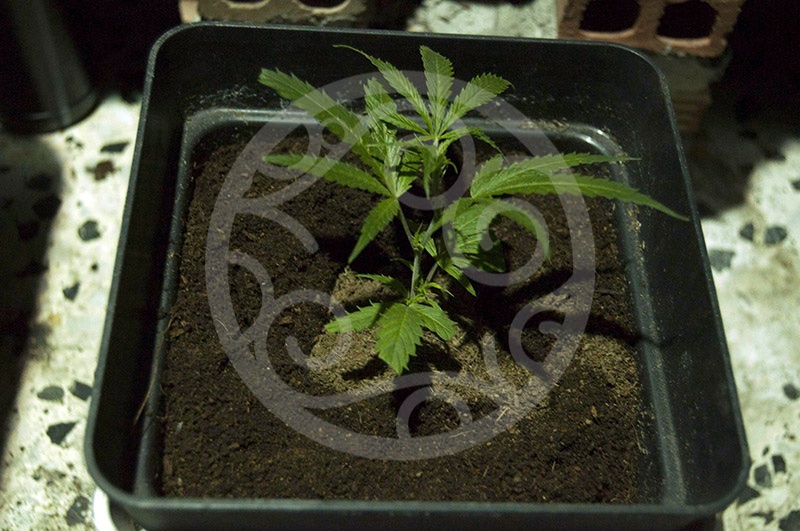
Now you only need to water the plant and wait a few days until it gets its vigour back as a result of the new space that we made available for the roots’ growth. It is advisable to use root stimulator in the first irrigations.
If you have any questions, it will be a pleasure to answer them in the comment section below.
All the best from Philosopher Seeds.







